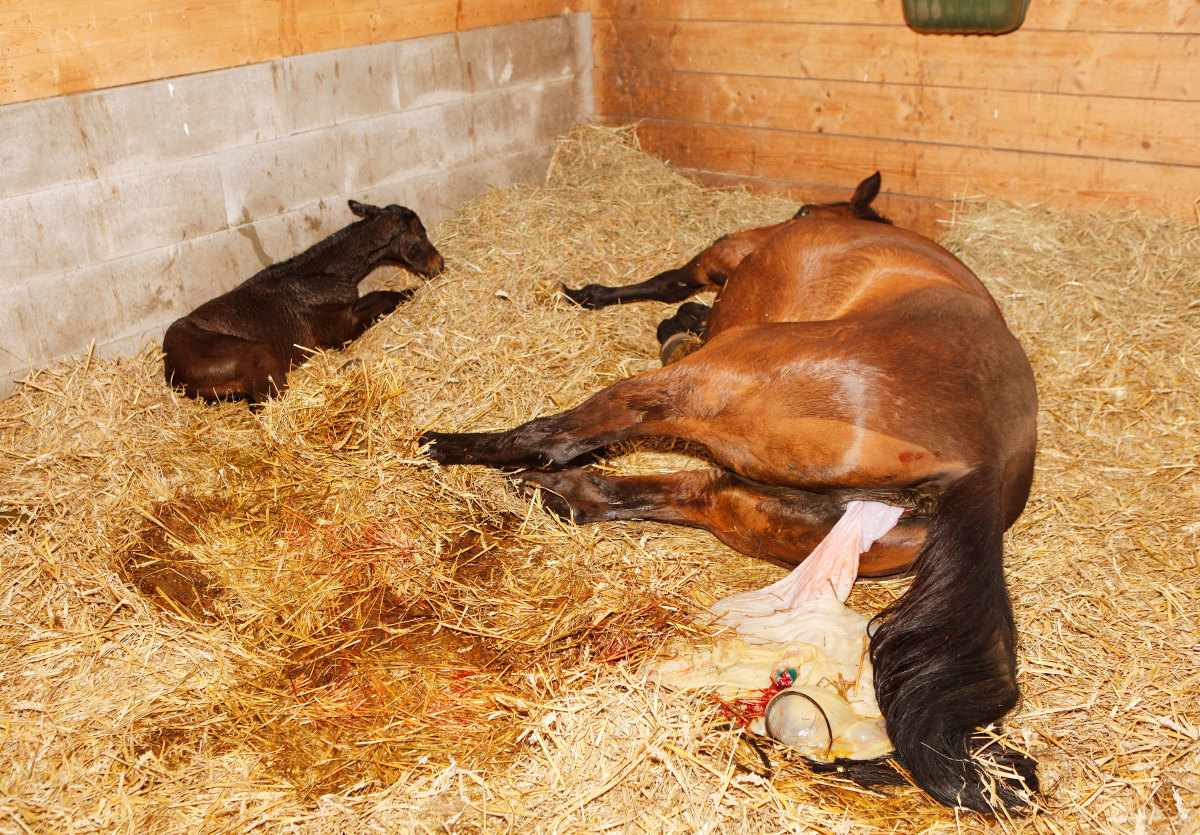
Monitoring a mare due to foal can take weeks of sleepless nights for horse owners and for veterinarians in charge of the foaling. Mammary secretion measurements of calcium and pH help fine-tune the timeline as to when parturition is imminent.
A Cornell study looked at the practicality of induction of foaling, i.e., augmentation, to coincide with the presence of trained personnel to assist the mare and foal in case of trouble, and to administer colostrum in a timely fashion [Cheong, S.H.; Herrera, J.M.C.; Dockweiler, J.C.; et al. Efficacy and outcome of foaling augmented with oxytocin using mammary calcium and pH criteria to guide the timing of augmentation. Animal Reproduction Science Feb 2019].
Augmentation with oxytocin was considered based on physical and clinical changes in the mare—relaxation of pelvic ligaments, elongation of the vulva, mammary gland development, and filling and waxing of the teats—along with electrolyte and pH changes in milk composition, i.e., ≥ 250 ppm calcium and pH ≤ 6.5. Birth of a foal occurred within two hours following an injection of 3 IU of oxytocin. The average time until birth was 44 minutes, with a range of 20-75 minutes.
The three groups examined were:
- Time Match – 37 mares that were not augmented but foaled in this barn between 2013-2016.
- Mare Match – previous foaling records of natural births collected from 32 mares that were augmented in this study.
- Historic Match – 165 foaling records from 2007-2016. These include the above two groups in addition to other mares. This data identifies any occurrences of dystocia or other foaling problems.
The researchers observed that foals stood more quickly with the “augmented” birth process than the other two groups—41 minutes for foals born to augmented mares versus 52 minutes for natural foaling. However, it took a bit longer for the augmented birth foals to nurse—105 minutes versus 93 minutes. All foals nursed without assistance by three hours after birth. There was no difference between groups for fetal membrane retention; it took 58-72 minutes for expulsion of fetal membranes.
In conclusion, the authors note that augmentation is safe and efficacious provided selection of mares is based on physical and mammary secretion changes that corroborate that the mare is imminently close to foaling.








